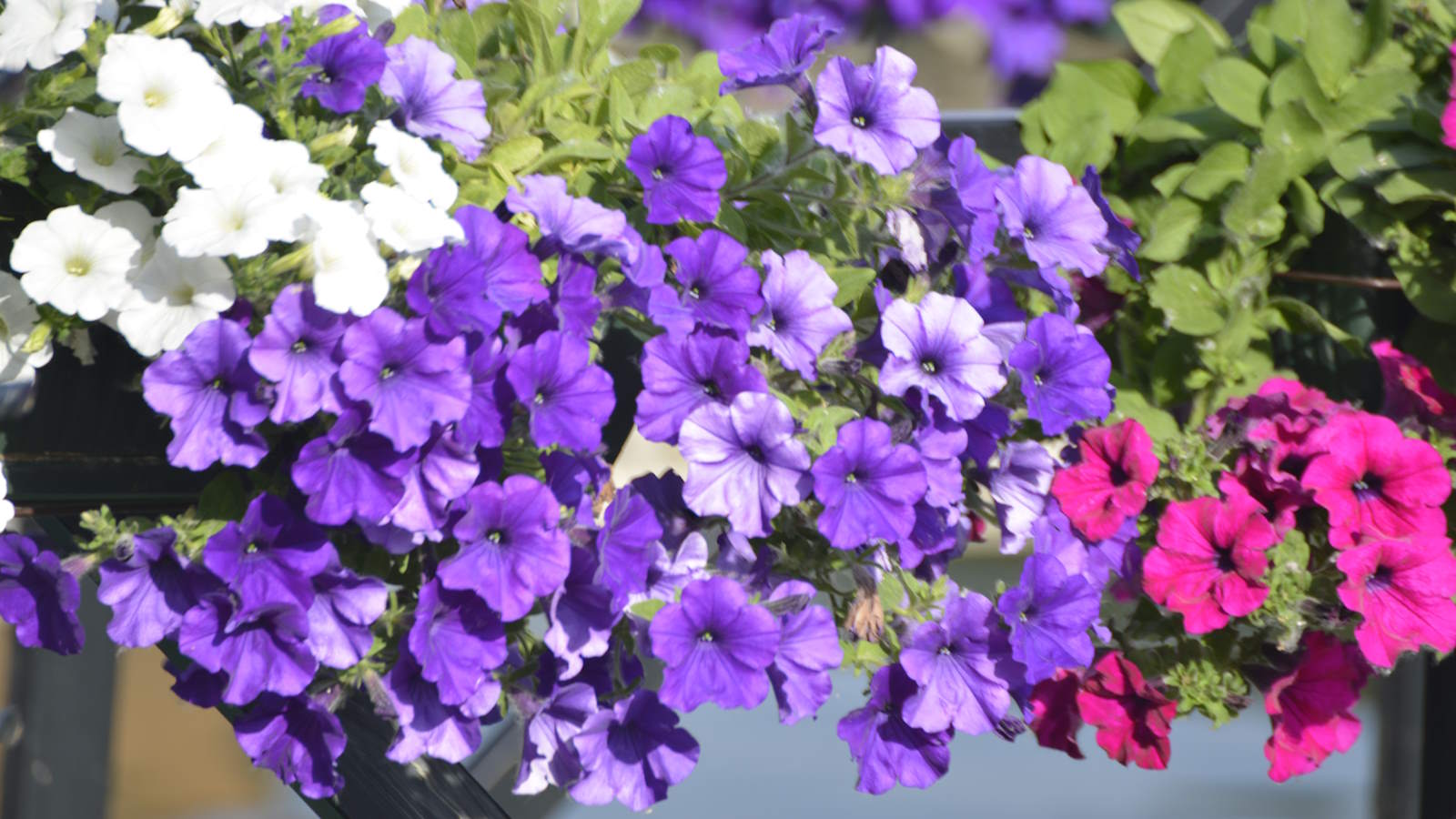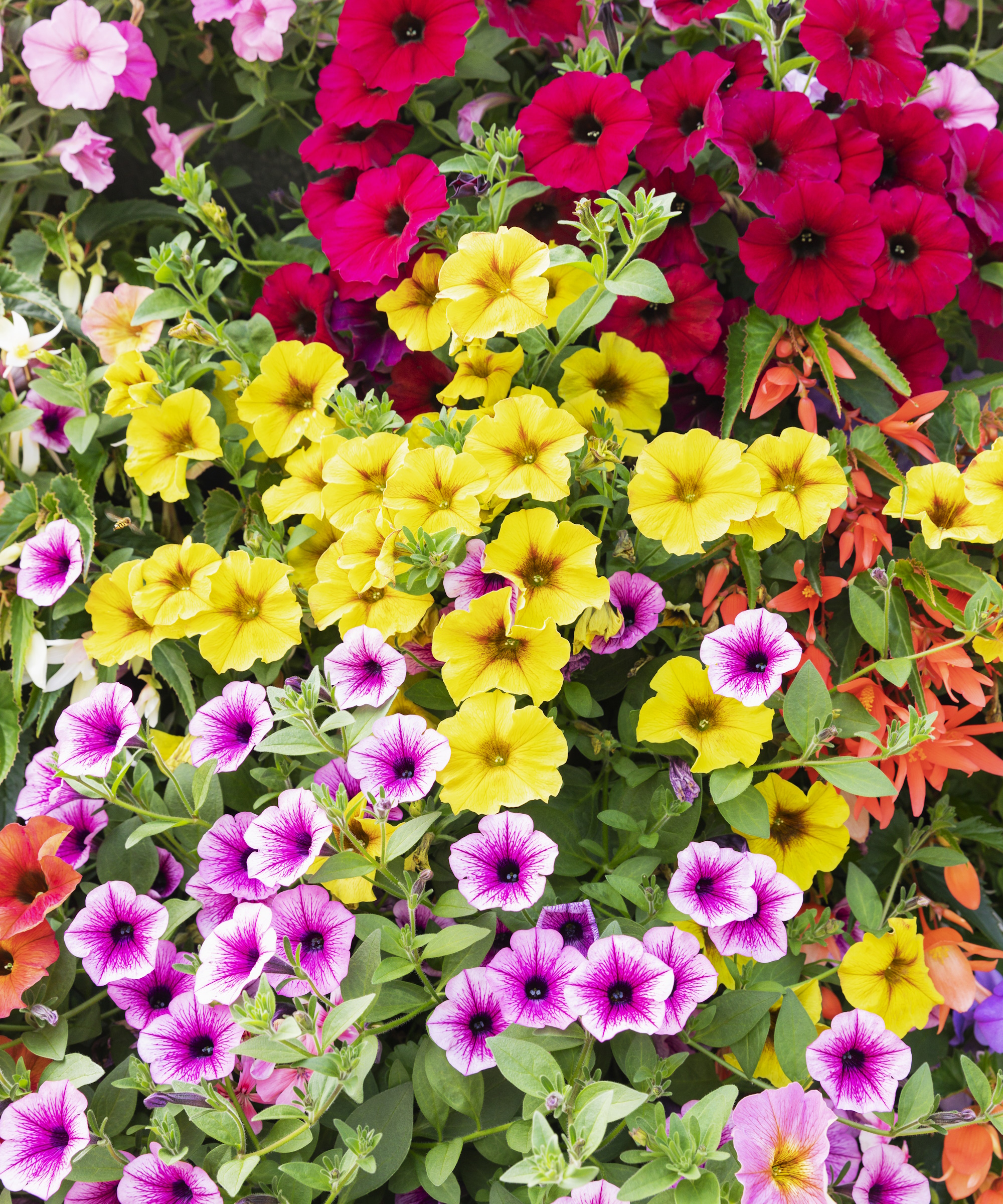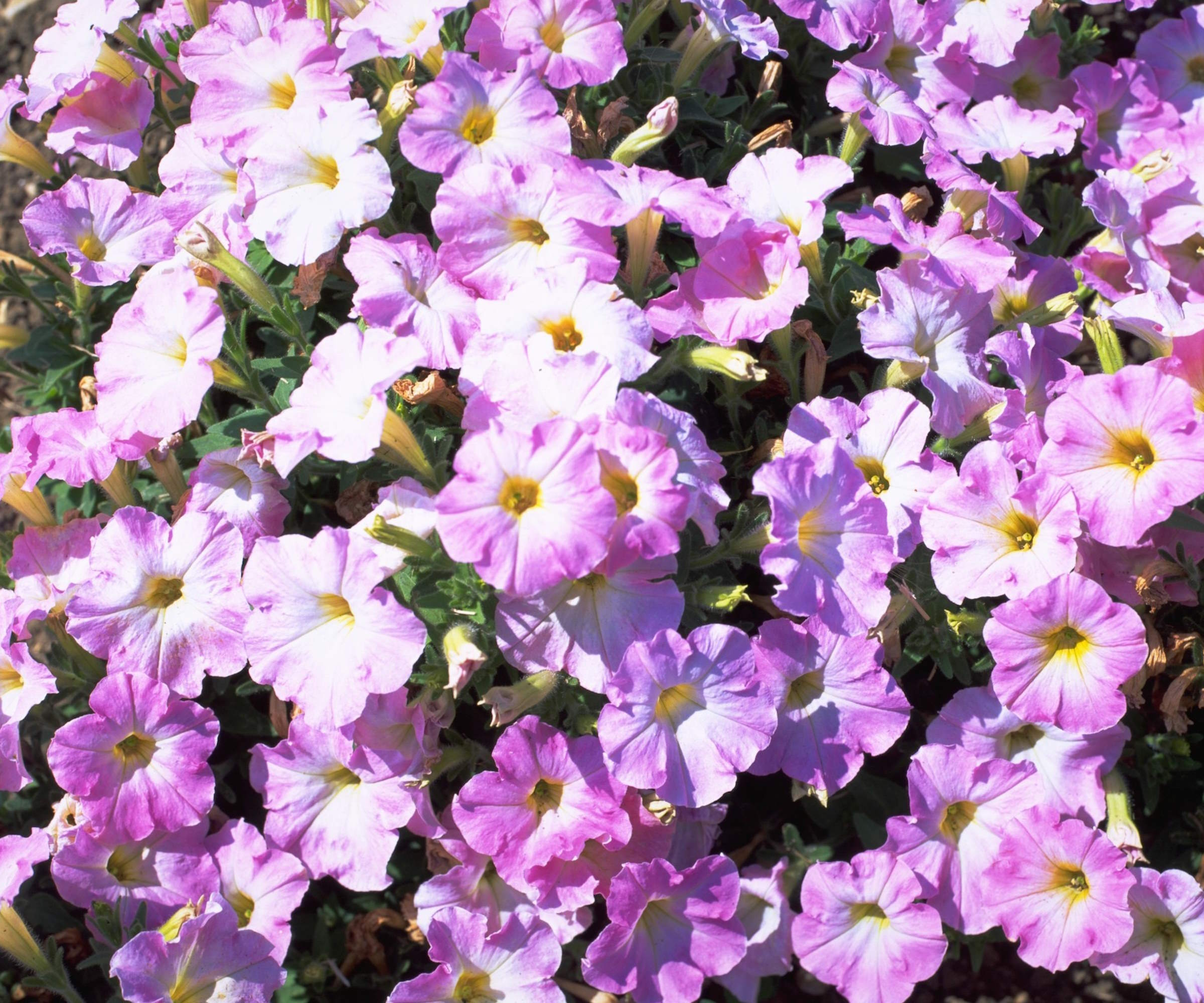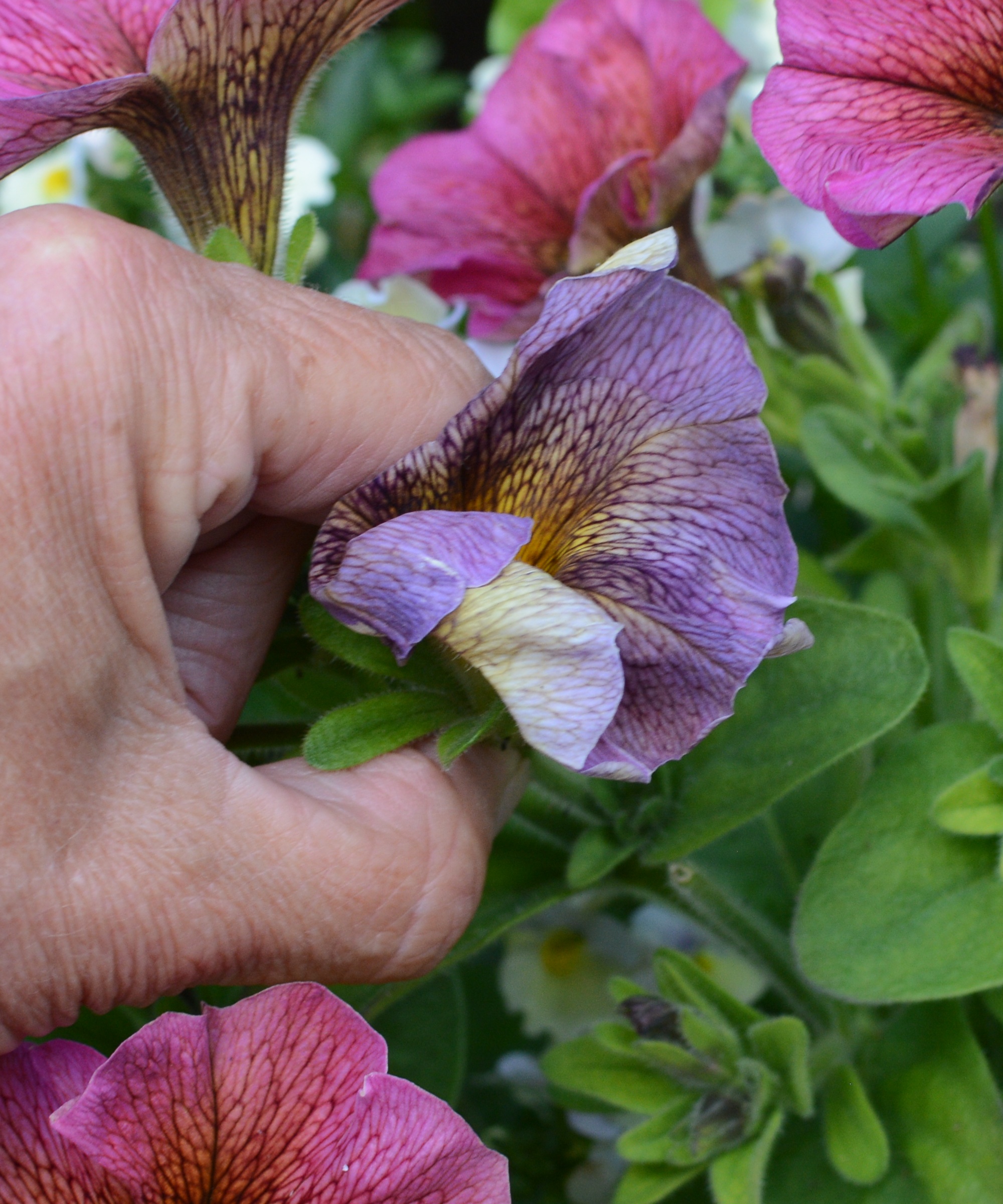
If you want easy-to-grow and prolific-blooming plants that can provide pops of color all summer long, look no further than petunias. These hugely-popular fast-growing plants come in different sizes, textures, and colors and are highly versatile as part of any backyard idea.
Often grown as annuals, petunias can be successfully used in flower beds, containers, or hanging baskets. Their long flowering period is one of their great merits and regular pruning of petunias will keep them looking at their best for the entire season.
While many plants require one or two trims per year, petunias benefit from a more regular regime of cutting back and deadheading throughout the summer. So add cutting back petunias to your summer gardening checklist and see our guide to when and how you trim.

Should petunias be cut back?
Pruning petunias offers several benefits. It helps to keep petunias blooming for longer, ensures the plant remains healthy, and encourages new growth. It is a quick and easy task that will keep petunias looking great.
When to cut back petunias

Prune petunias throughout the growing season to keep the plant at its best. If you purchase petunias to plant in your backyard, an early prune when you plant them can encourage them to grow bushier and you will get fuller plants with lots of buds.
The plants quickly grow at the start of the season in May and June. Thad Fry, plants expert and research specialist in the Darr College of Agriculture at Missouri State University, recommends cutting back petunias in July after this early vigorous growth starts to slow down.
From that point on, petunias will benefit from regular trimming. Thad recommends pruning them at least every week, saying: ‘You don't need to prune every stem every week; just pick the oldest and longest stems.’
Little and often is the best approach to pruning petunias, trimming a small amount of leggy stems every week or two will keep them looking at their best for longer. Pruning these older bare stems will encourage the plant to develop new growth to fill the space and keep petunias full and healthy.
Deadheading petunias throughout the summer is also essential to keep the plant flowering for longer. It stops the petunia from putting energy into developing seeds and redirects it back into flowering. Routinely check the plants weekly to remove unsightly spent blooms. If you also identify any dead, damaged, or diseased growth, remove them throughout the year.
Continue to lightly trim and deadhead petunias throughout the summer before giving the plant a final pruning at the end of September.
How to cut back petunias

As with any pruning, use sharp and clean pruning shears to prevent tearing or crushing stems and increase the disease susceptibility. A pair of pruning shears, snips, or kitchen scissors are the ideal garden tools for pruning petunias, while spent flowers can easily be pinched between your thumb and forefinger.
‘Most of the time should be spent cutting off the spent flowers and trimming the stem back just above a healthy leaf node. This practice will then inspire constant blooming and help prevent legginess,' says Mathew Wilson, a professional gardener and CEO of Handy Gardeners.
‘Snip off the spent flowers and trim the stems back to allow new growth at the leaf node, which helps keep the petunias compact. This method provides lots of blooms all summer long.’
When it comes to how to prune petunias sensibly, observe the one-third pruning rule. The stems can be cut back by a third but no more than half of a stem’s total length.
When you regularly trim the plant throughout the summer, the maximum you can cut in one go is one-third. Removing more material than this in one go risks stressing the plant and leaving it susceptible to pests and diseases. There is no guarantee how the petunia will respond to such heavy pruning and it may not reshoot and look as compact and neat as you desire.
If you are growing lots of petunias, it may seem like a lot of time, planning, and effort to trim and deadhead them all. Lauren Kurtz, a professional horticulturist and wikiHow Gardening Expert, recommends establishing a simple routine of cutting a third of your plants every week.
‘Each trimmed stem will branch out and give 3 or 4 new blooms within 2-3 days. Remove the bulk of the stems, leaving at least 2 inches to regrow,’ says Lauren. ‘This is an effective way to remove deadheads if you have too many plants to pinch off individual deadheads one at a time.’
Feeding plants after trimming with a balanced fertilizer can help promote strong regrowth and keep the petunia blooming and healthy.
Shop pruning tools
Steel blade micro-tip plant shears ideal for pruning flowers, herbs, and more. Micro-tip blades cut all the way to the tip for clean, healthy cuts
A convenient tool sharpener that can fit in a pocket or tool bag. You can quickly sharpen the blades of your shears ahead of any pruning task
A set of three different-sized pruning shears for any type of cutting back or deadheading. All three pruners have sharp and rust-resistant steel blades
FAQs
Why are my petunias tall and spindly?
Petunias can begin to look leggy and spindly during summer, with the blooms appearing on the end of tall stems. The key to avoiding tall and spindly petunias is to make sure you water plants regularly so they have enough moisture. Another important factor is pruning and removing spent flower heads and seed heads. Regularly cutting back and deadheading will prevent petunias from getting leggy.
Whether you have these dazzling plants in your flower beds or grow petunias in pots for stunning displays on a patio, deck, or balcony, remember to trim them little and often for the best blooms. It can be a quick and simple job, with the rewards far outweighing the effort.







